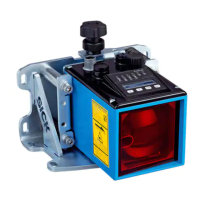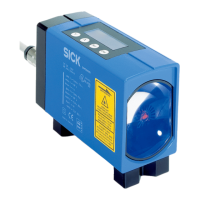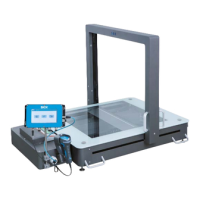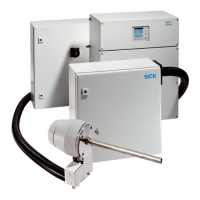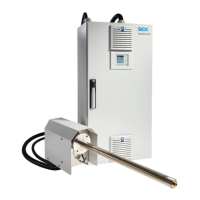Operating instructions Distance measuring device DL100 – CANopen®
CANopen®-interface
72 © SICK AG • Subject to change without notice • 8015416/ZPN2/2017-09-08
10 CANopen
®
-interface
10.1 Basics
The communications standard CANopen
®
wasdenedasstandardizedap-
plication for distributed industrial automation systems based on CAN and
CAL (CAN Application Layer). The user organization CiA
®
(CAN in Automa-
tion) has described CANopen
®
as a standard in detail, see www.can-cia.org.
The CANopen
®
-bus permits:
• Access to device and communications parameters
• Synchronisation of several devices
• Congurationofthenetwork(LSS)
• Cyclicaland/oracyclicalprocessdatatrac.
Explanation of terms
Abbreviation Explanation
PDO Process Data Object: Used for real-time transfer of process
data.
SDO Service Data Object: Permits writing and reading access to the
object directories
SYNC Synchronization Object: Serves synchronization of network
subscribers (slaves)
EMCY Emergency Object: Serves to display errors of a slave and/or
the slave peripherals.
NMT Network Management: used for internal CANopen
®
network
control
LSS LayerSettingServices:LSS:Permitscongurationofthebaud
rate and Node-ID of all or individual slaves that are addressed
via the Identity Object 1018h.
RTR Layer Setting Services: Trigger type of PDOs
Node-ID The Node-ID addresses the slave in the network and can be
freely selected via the CANopen
®
bus between 1 and 127.
DLC Data Length Code: Describes the length of a CANopen
®
tele-
gram
ER Error Register: Object 1001h, maintains the error condition of a
device, bit-encoded
EEC EmergencyErrorCode:Acodethatuniquelyidentiestheerror
is transmitted in the emergency telegram. This is the “Emergen-
cy error code“ that comprises of two bytes. A temperature error,
for example, is described with 40xxh.
MSEF ManufactureSpecicErrorField:Fourbytesthatpermitthe
manufacturer to describe the error code more precisely. If an
emergency telegram does not have an MSEF, it is 0.
COB CommunicationObjectIdentier:Eachcommunicationsobject
has a unique COB-ID in the network. It serves addressing and
priorisation of the PDOs. The lower the COB-ID, the higher the
priority.

